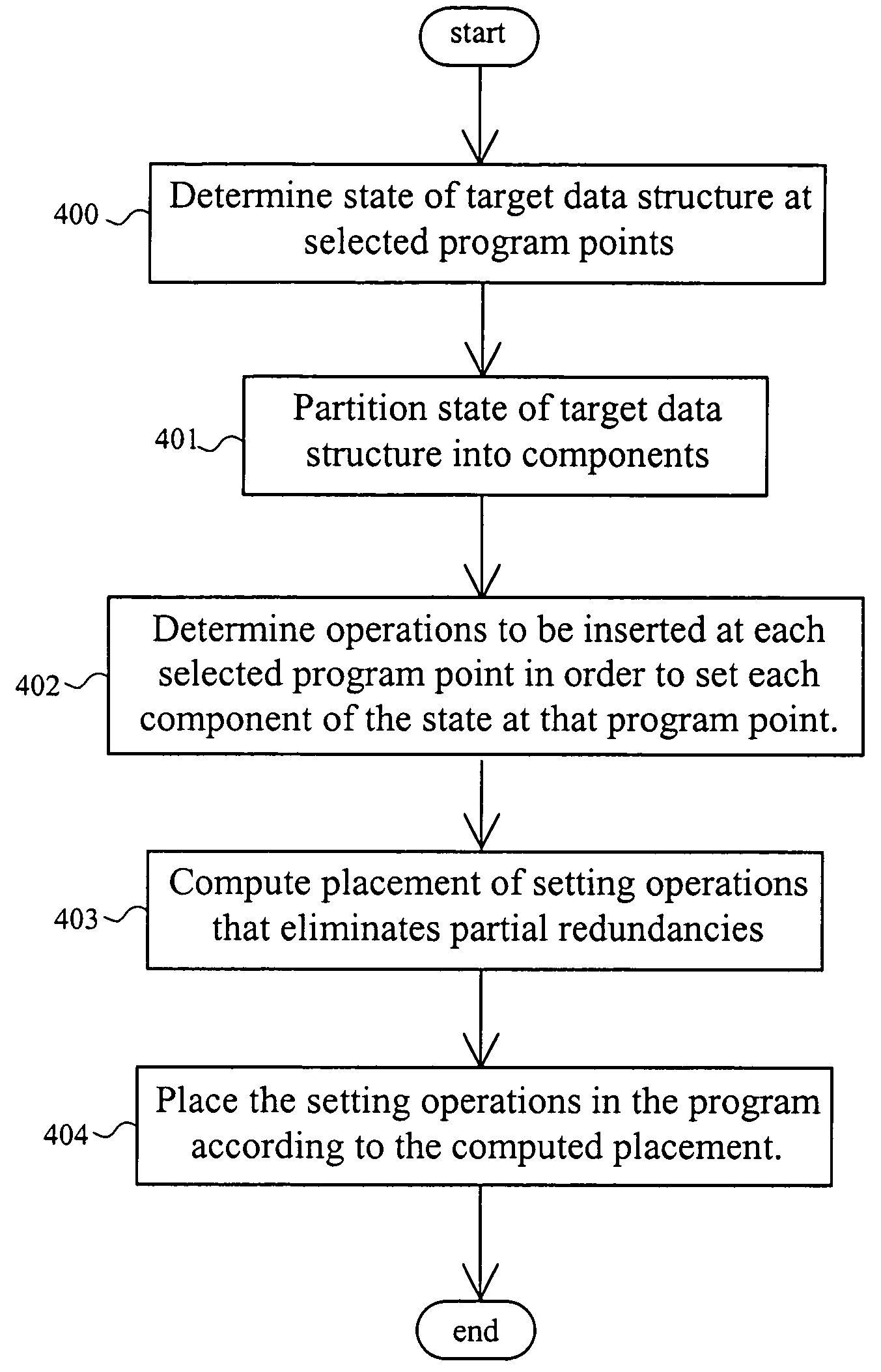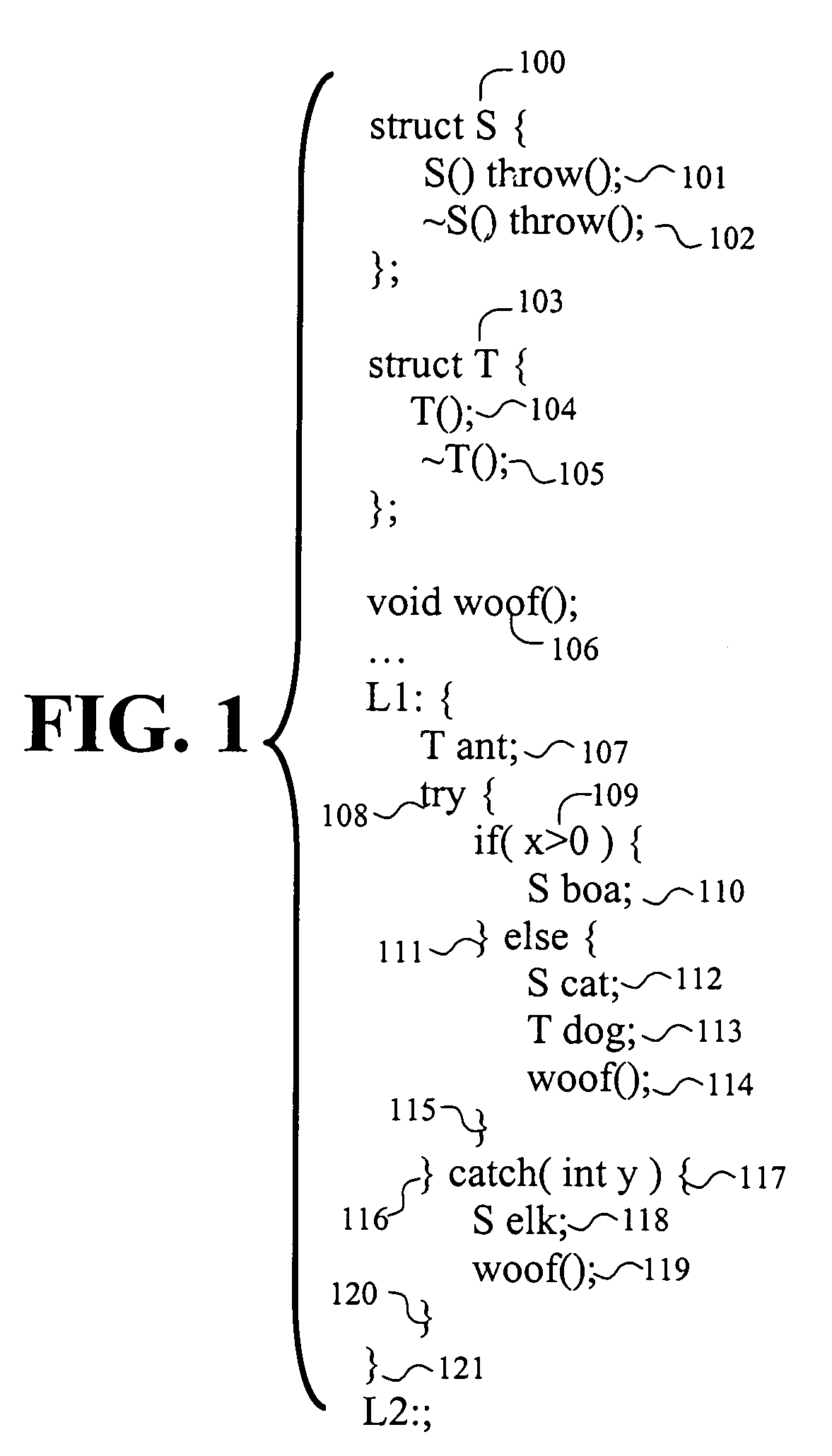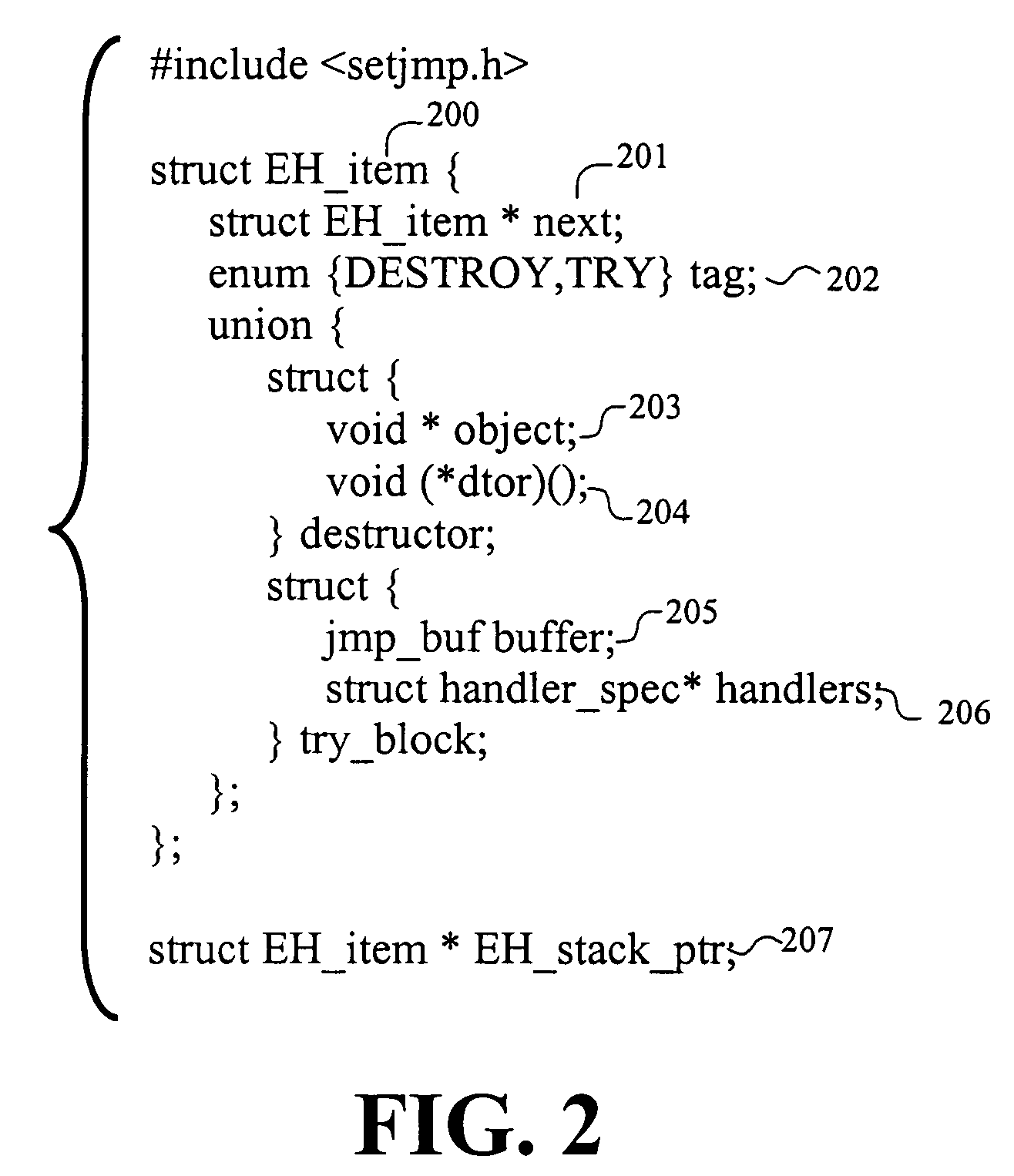Data-flow method for optimizing exception-handling instructions in programs
a data flow and program technology, applied in the field of software compiler technology, can solve the problems of inefficient code in fig. 3, prior-art implementations have the disadvantage of being quite inefficient, and cannot be implemented in compilers, so as to eliminate partial redundancies
- Summary
- Abstract
- Description
- Claims
- Application Information
AI Technical Summary
Benefits of technology
Problems solved by technology
Method used
Image
Examples
Embodiment Construction
[0047]The present invention can work with a variety of representations of exception-handling constructs.
[0048]Here is a summary of notations. The symbols “” and “” denote logical AND and OR respectively. When ≦ is used to compare Boolean values, “false” is considered less than “true”. Except in listings for the C or C++ languages, the symbol “=” has its usual mathematical meaning of denoting equality, and “:=” denotes assignment. Thus “a=(b=c)” means to compare b and c, and compare the resulting Boolean value (true or false) with the Boolean value a. In contrast, “a:=(b=c)” means to compare b and c, and assign the resulting Boolean value to a. For the listings using the C or C++ languages, the symbol “=” has the usual C and C++ meaning of denoting assignment, and the symbol “==” denotes comparison for equality.
[0049]FIG. 4 shows an overview of the steps of a method in accordance with the present invention. The steps permits a much more general optimization than just for exception ha...
PUM
 Login to View More
Login to View More Abstract
Description
Claims
Application Information
 Login to View More
Login to View More - R&D
- Intellectual Property
- Life Sciences
- Materials
- Tech Scout
- Unparalleled Data Quality
- Higher Quality Content
- 60% Fewer Hallucinations
Browse by: Latest US Patents, China's latest patents, Technical Efficacy Thesaurus, Application Domain, Technology Topic, Popular Technical Reports.
© 2025 PatSnap. All rights reserved.Legal|Privacy policy|Modern Slavery Act Transparency Statement|Sitemap|About US| Contact US: help@patsnap.com



